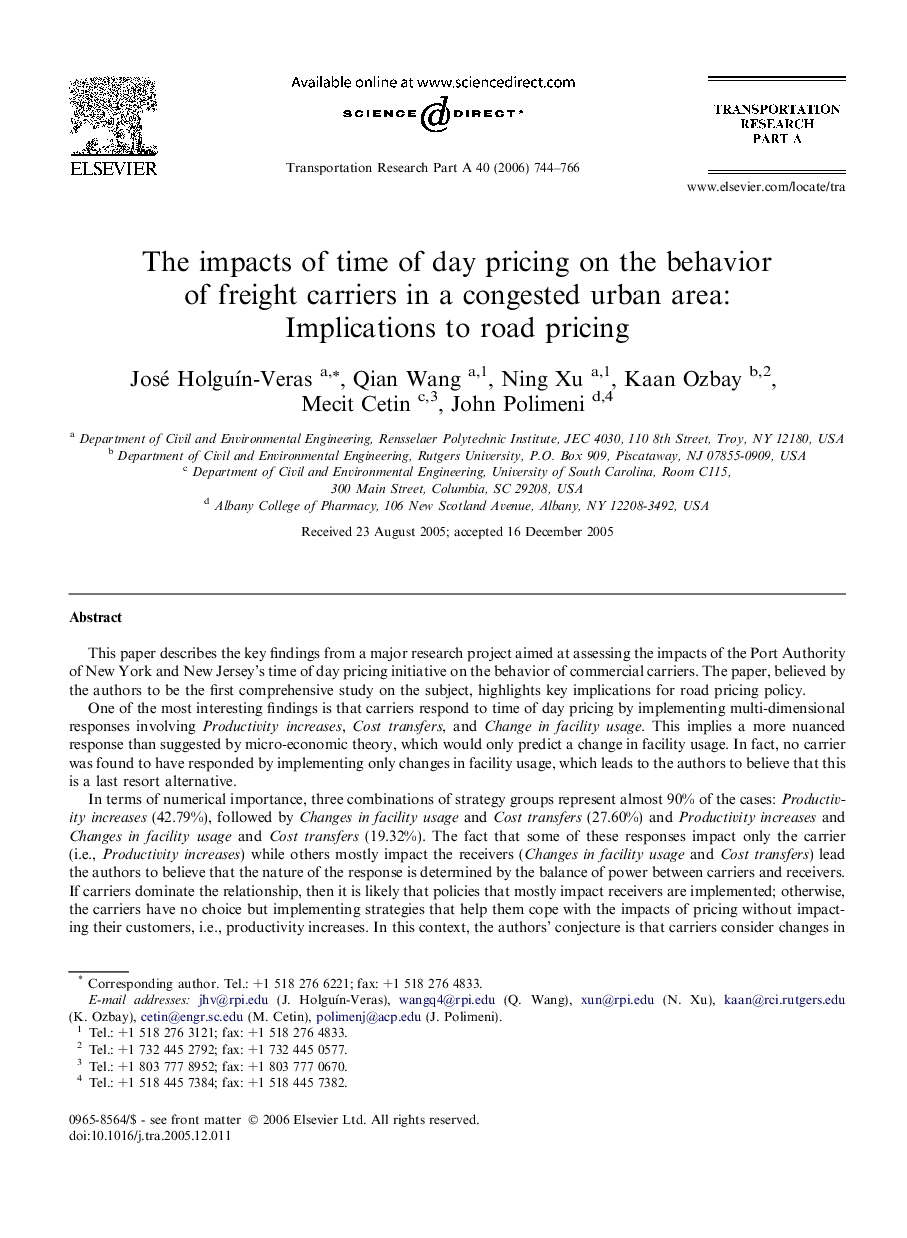| کد مقاله | کد نشریه | سال انتشار | مقاله انگلیسی | نسخه تمام متن |
|---|---|---|---|---|
| 312706 | 534244 | 2006 | 23 صفحه PDF | دانلود رایگان |

This paper describes the key findings from a major research project aimed at assessing the impacts of the Port Authority of New York and New Jersey’s time of day pricing initiative on the behavior of commercial carriers. The paper, believed by the authors to be the first comprehensive study on the subject, highlights key implications for road pricing policy.One of the most interesting findings is that carriers respond to time of day pricing by implementing multi-dimensional responses involving Productivity increases, Cost transfers, and Change in facility usage. This implies a more nuanced response than suggested by micro-economic theory, which would only predict a change in facility usage. In fact, no carrier was found to have responded by implementing only changes in facility usage, which leads to the authors to believe that this is a last resort alternative.In terms of numerical importance, three combinations of strategy groups represent almost 90% of the cases: Productivity increases (42.79%), followed by Changes in facility usage and Cost transfers (27.60%) and Productivity increases and Changes in facility usage and Cost transfers (19.32%). The fact that some of these responses impact only the carrier (i.e., Productivity increases) while others mostly impact the receivers (Changes in facility usage and Cost transfers) lead the authors to believe that the nature of the response is determined by the balance of power between carriers and receivers. If carriers dominate the relationship, then it is likely that policies that mostly impact receivers are implemented; otherwise, the carriers have no choice but implementing strategies that help them cope with the impacts of pricing without impacting their customers, i.e., productivity increases. In this context, the authors’ conjecture is that carriers consider changes in facility usage to be a very disruptive alternative that forces them—and more importantly their customers—to alter their shipping/delivery patterns. It should be pointed out that, although carriers stand to benefit from working during the off-peak hours, they could only do so if their customers are willing to work during the off-peak hours.The data indicate that 36 carriers (20.2%) changed behavior because of the time of day pricing initiative. This number includes 17 carriers (9.0%) that reacted by increasing shipping charges to receivers, which illustrates the need to find out more about how receivers reacted to the time of day pricing initiative. If the carriers that only increased shipment charges are excluded, 15.3% of carriers changed behavior because of time of day pricing.
Journal: Transportation Research Part A: Policy and Practice - Volume 40, Issue 9, November 2006, Pages 744–766